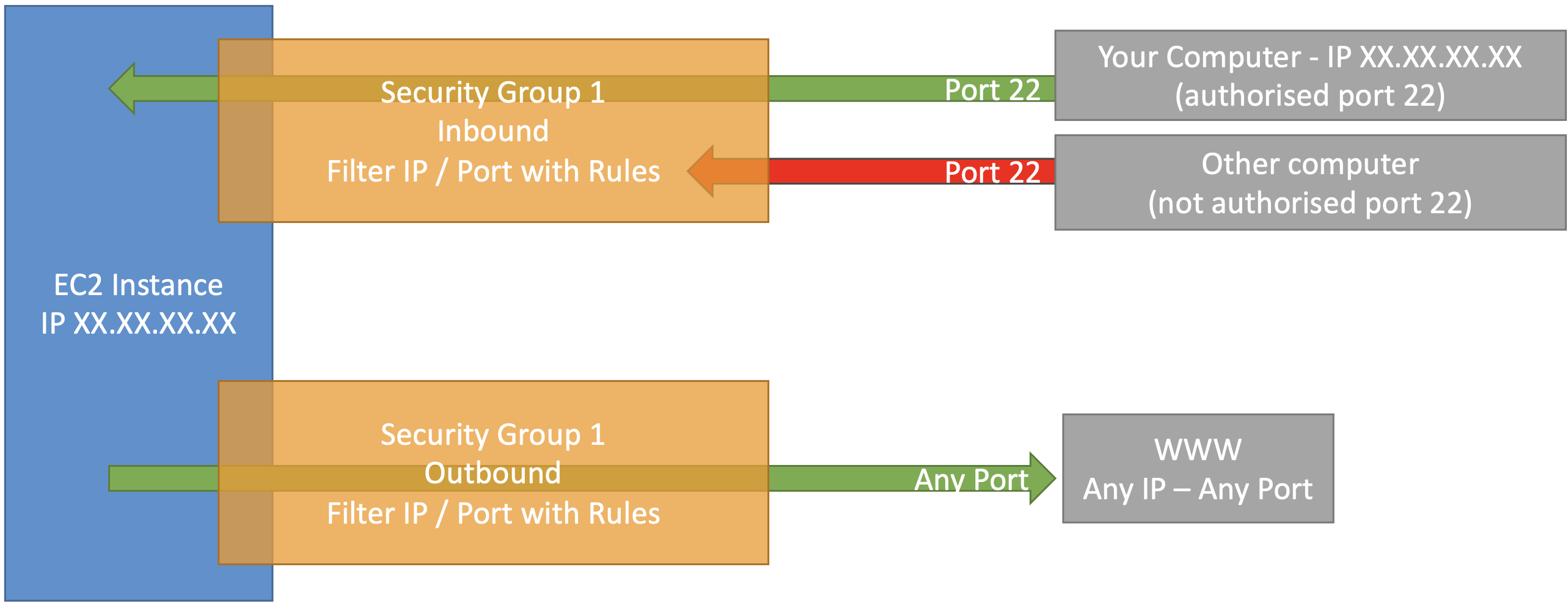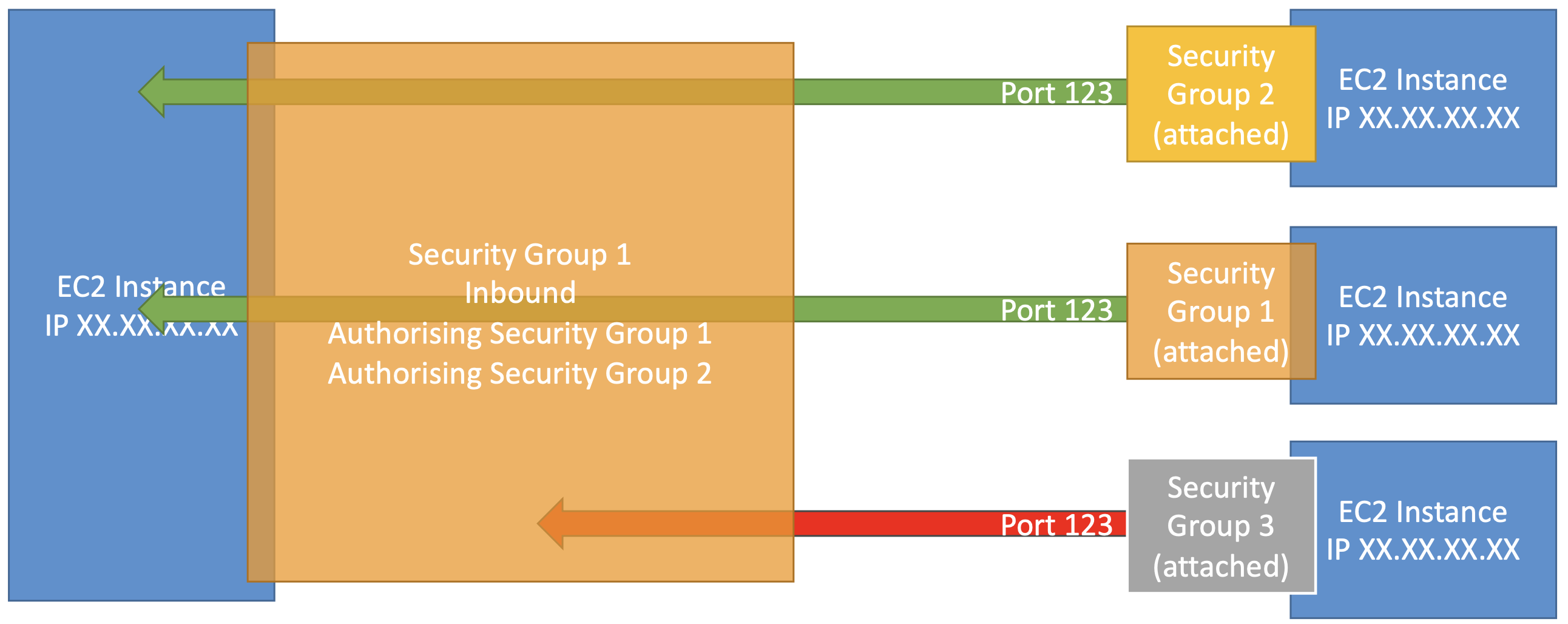¶ Security Groups
Security Groups are the fundamental of network security in AWS
- They control how traffic is allowed into or out of our EC2 Instances.
- Security groups only contain rules
- Security groups rules can reference by IP or by security group
- Security groups are acting as a “firewall” on EC2 instances
- They regulate:
- Access to Ports
- Authorised IP ranges – IPv4 and IPv6
- Control of inbound network (from other to the instance)
- Control of outbound network (from the instance to other)
¶ Sample Security Group

¶ Security Group Diagram

¶ Good to Know
- Can be attached to multiple instances
- Locked down to a region / VPC combination
- Does live “outside” the EC2 – if traffic is blocked the EC2 instance won’t see it
- It’s good to maintain one separate security group for SSH access
- If your application is not accessible (time out), then it’s a security group issue
- If your application gives a “connection refused“ error, then it’s an application error or it’s not launched
- All inbound traffic is blocked by default
- All outbound traffic is authorised by default!
¶ Referencing Other Security Groups

¶ Classic Ports to Know
- 22 = SSH (Secure Shell) - log into a Linux instance
- 21 = FTP (File Transfer Protocol) – upload files into a file share
- 22 = SFTP (Secure File Transfer Protocol) – upload files using SSH
- 80 = HTTP – access unsecured websites
- 443 = HTTPS – access secured websites
- 3389 = RDP (Remote Desktop Protocol) – log into a Windows instance
¶ Key Pairs
- Keypairs are created when the instance is created.
- It consist of a:
- Public Key
- (used to encrypt username and password)
- Retained by AWS- Private Key
- used by windows to decrypt the data, allowing you to gain access to the login credentials
- used by Linux to login via SSH
- Retained by User
- Private Key
- These are only shown at creation
- You can re-use key-pairs.